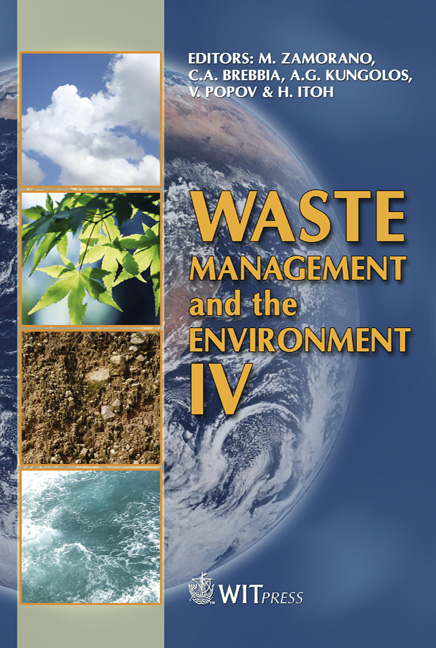Emission Behaviour And Hg Speciation From Waste Incinerators
Price
Free (open access)
Transaction
Volume
109
Pages
10
Page Range
901 - 910
Published
2008
Size
726 kb
Paper DOI
10.2495/WM080911
Copyright
WIT Press
Author(s)
K. Yasuda, M. Yamagata, F. Takahashi & M. Kida
Abstract
The control of Hg emissions from waste incinerators is very important in Japan, because more than 80% of organic waste is incinerated in this country. The Hg content of the coal used in utility boilers is relatively low in Japan. However, there are currently no regulations governing Hg in incineration gas. In this study, the emission behaviour of Hg speciation in Japan and technology for controlling Hg emissions, such as a Bag filter (BF) with activated carbon (AC) injection, are discussed. The Hg speciation at the inlet to the BF has a very high percentage of Hg2+ compared with Hg0. The average Hg emission coefficients from three incinerators were 0.3g/t at a municipal solid waste incinerator, 0.2g/t at a sewage sludge incinerator and 2.0g/t at an automobile shredder refuse incinerator, respectively. The emission coefficient from the automobile shredder refuse incinerator was especially high. The BF with AC injection removes over 95% of the Hg2+. Keywords: waste incinerator, Hg0, Hg2+, emission coefficient, control. 1 Introduction Because of its high volatility, Hg is emitted into the atmosphere from both anthropogenic and natural sources. Therefore, it enters oceans and terrestrial waters directly from the atmosphere or even from its deposits in the surrounding basin without a particular source of Hg [1]. Japan has passed the Basic Law for Environmental Pollution Control, which is used as the basis for environmental standards for public water supplies, and the \“Prevention of Water Pollution Act”, which provides standards for effluents, in response to two reported cases of
Keywords
waste incinerator, Hg0, Hg2+, emission coefficient, control.





